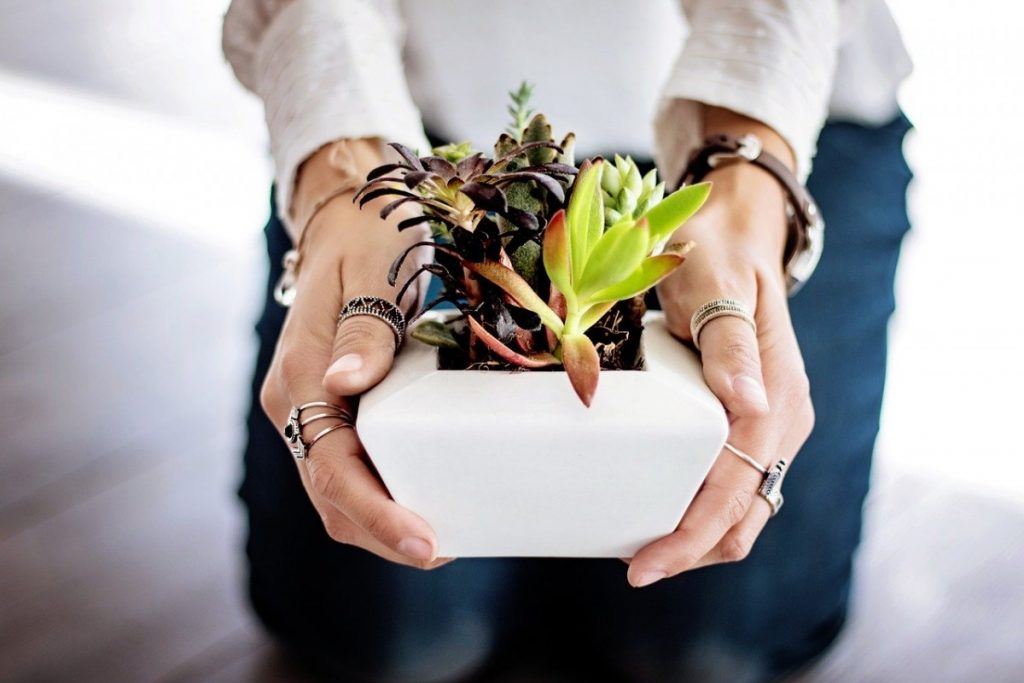Growing succulents indoors and wanting to transfer outdoors, you may wonder how to do it in a way that won’t harm the plants. In this post, I will share with my personal experience with acclimating succulents, what I learned in the process, and what mistakes you should avoid.
Remember that succulents that have been indoors for long may die if you bring them straight outdoors, especially if you live somewhere where the sun is blazing. You need to be careful during this process, unless you want to replace most of your plants with new ones…
Table of Contents
Success lies in knowing your plants
The success boils down to understanding the very nature of your plants. Some succulents love partial sun while others prefer full sun, and as much of it ass they can get. If you don’t know what type of succulents you have, however, or its sun preferences, you can gradually expose the plant to indirect sunlight for half an hour or hour a day. Then every two days try to increase the exposure. If you don’t see any negative reaction, gradually place them under direct sunlight.
One thing to remember here though is that, sometimes, during the first sunlight exposure succulents may have signs of sunburn. If you notice this in your plants, reduce the exposure to sun immediately. The best time to take your succulents to sun is in the morning, because the morning sun is not too hot for any plants. During the afternoon, however, I keep my plants in shade to keep them safe from sunburn. Of course, it also depends on where you live, because in some places the sun will never be too strong–either for humans or for plants.

Timing is everything when it comes to acclimatization
Succulents’ acclimatization usually happens after a cold season. This is when I usually return most of my indoors plants outdoors. But when and how to do acclimation? What works really well with my succulent plants is to take them outside when the temperature does not drop below 40 degrees Fahrenheit all day long. With such temperature I know they are completely safe from adverse effects they may get from staying in a cold climate.
If you have soft succulents, remember that they are the most vulnerable to extreme cold temperatures.You have to be sure that they are safe outside. If after bringing them outside the temperatures drops again below 40 degrees Fahrenheit (for any reason), bring them back inside. Most soft succulents cannot withstand freezing temperatures even for a day or two.
Too hot isn’t a good temperature either
Succulents accustomed to indoors environment may easily get sunburned outside. One of the most common signs of sunburn is the discoloring of the leaves, as they turn mostly brown. When you notice brown spots, it is an indicator that your plant is probably getting too much sunlight.
If it is the case, you can save the succulents by moving them into the shade. A shade cloth can be a good cover to use (click here to check my favorite and recommended shade cloth on Amazon), if you prefer to (or have to) still keep them outside, regardless of the temperature.
Watering also changes once you acclimatize your succulents
During summer it is always hotter outdoors than indoors. This means that the humidity is lower too–at least in most regions, and succulents need more water than when you grow them indoors. In this instance, you need to adjust your watering schedule, and I always recommend the soak and dry method–which is the best in both summer and winter!
Soak the soil totally and then allow it to dry. Water again only when the soil is completely dry. Make sure that you are using pots with drainage holes. There should be a way for an excess water to drain at the bottom of the pot, so your plants do not suffer from over-watering. It is also important to use a fast-draining soil (click here to check my recommended soil on Amazon).
Pests can attack freshly transferred succulents
Placing succulents outdoors makes them more vulnerable not only to sunburn, but also diseases and pests. Squirrels can be one of the worst threats you may face with your plants. These small creatures can rip your succulents out of their pots. Sometimes, squirrels eat the leaves of the succulents. and while the plant won’t necessarily die, it will lose a lot from its beauty.
I have learned that dressing succulent soil with rocks prevents the squirrels from digging. If you want additional protection against these intruders, you can also sprinkle the soil with Cayenne pepper (check this one on Amazon). Once they smell the pepper they will start sneezing and this unpleasant experience will keep them away from your plants.
Apart from squirrels, you might also encounter mealy bugs and other fungal infections on your plants. Fortunately, there are simple ways to combat these tiny enemies. To learn more about how to defeat mealy bugs, check my other post which discusses the subject in detail.
FAQ
Q: Are succulents OK in full sun?
A: Succulents are native to semi-desert areas. This is the reason why most people think that they can thrive under direct sunlight. But the truth is that they cannot. Scourging direct sunlight can cause sunburn, which will ultimately lead to death of the plants. On the other hand, they need sun to live. The sunlight is an important requirement for photosynthesis. However, too much heat can kill them. That’s why it is crucial acclimatizing the plants, and also giving them just a moderate amount of sunlight every day.
Q: Can a succulent get too much sun?
A: Too much sunlight exposure is not good for succulent plants. They may get sunburned. During the summer or hot season, it is better to keep your plants in shade.
